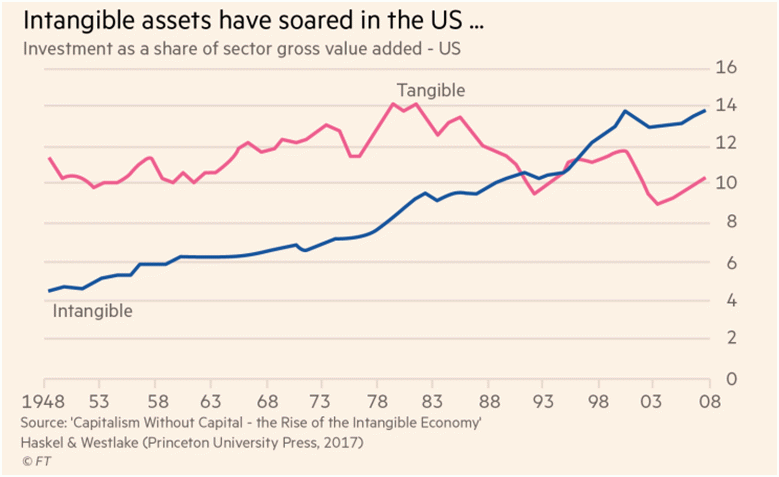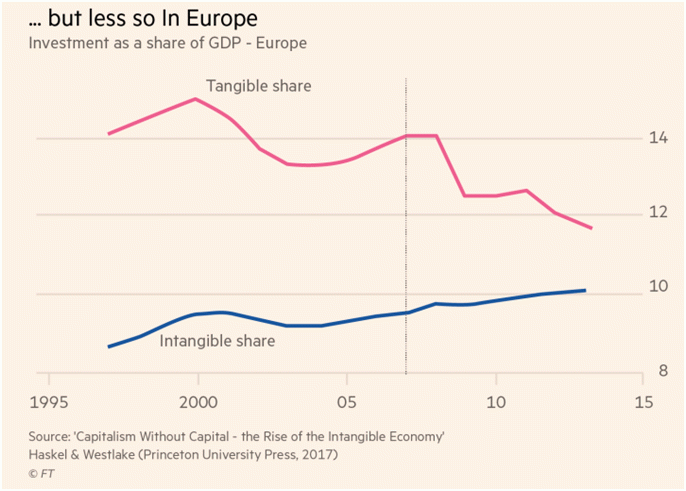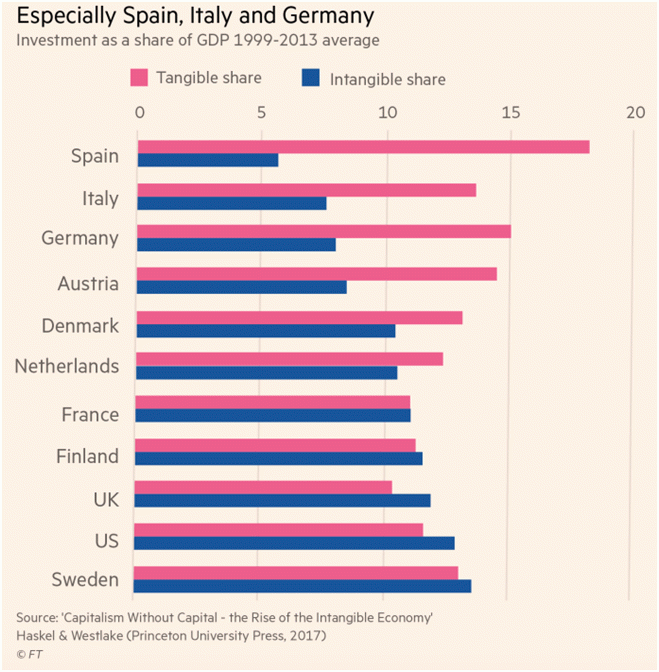Letter number 114 of June 2018
- TOPIC
- STATISTICS
- RESEARCH
- QUESTIONS & COMMENTS
- NEW
News : New equity investors on the LBO market
2017 saw the appearance, among the top LBO equity players, especially in the €500 to 2,000m entreprise value bracket, of new investors, long-term equity funds, either foreign, mainly Canadian (Caisse des Dépôts et des Placements du Québec - CDPQ, Omers PE, PSP, Ontario Teachers) or Asian (Fosun, Temasek, Citic Capital) or large French industrial families (Bettancourt-Meyers, Dentressangle, Peugeot).
Their long-term nature stems from the fact that they do not need to provide their investors with liquidity at the end of a maximum period of 10 years, like traditional LBO funds, which for the latter implies the sale of all of their investments at the end of the life of their funds.
These long-term investors are not newcomers on the LBO investors market, with some of them signing their first deals 10 year ago, first as investors in LBO funds, then as co-investors alongside the LBO funds in which they were invested[1]. Following this apprenticeship phase, in 2016 they started investing for themselves or managing small consortiums of investors of the same type, and in 2017 they got really serious.
In 2016, we saw CDPQ, which had co-invested in Keolis as minority co-investor alongside the majority investor Ardian in 2006, then in SPIE in 2011, take majority control of Foncia and then in 2017 of Sebia (entreprise value of €2bn), of Alvest (€900m) and of Fives (€1.5bn). We also saw the Dentressangle family take control of Kiloutou for €1.5bn.
Until now, they have focused on activities with low economic risk (metrology, funeral services, in vitro testing, etc.) and/or experienced management teams. Their much longer outlooks than traditional LBO funds, sometimes without a set term at all, may be attractive to management teams that have already carried out several LBOs in succession and who have probably already made their fortunes. Although these managers are prepared to recommit, they are aware that often the levers for creating value, after several consecutive LBOs, require more time to implement. They may also have had enough of tailoring the industrial strategies of their company to the exit timetables of the LBO fund which is their main shareholder and of having to put the former on hold in order to optimise the latter.
Because these long-term investors have, until now, not made their presence felt (some would say they have not been intrusive) among managers (compared with traditional LBO funds), the latter find a reference shareholder that is well suited to the solid experience that they have accumulated. It’s a bit like being listed on the stock market without having the drawbacks thereof[2]! This is probably why, despite the reopening of the IPO market in Paris since 2013, with eight LBO exits till 2016, there has not been a single one since 2016 notwithstanding a stock market environment that is more favourable. Last week, CDPQ snaps the 49,9% stake of the LBO fund CVC in Delachaux, one day before its actual listing. The fact that the order book was well covered and the IPO a very likely success had nothing to do with the opportunity for CVC to sell 100 % of its stake and not a large part, but not 100%, if Delachaux had been listed on the stock market.
It remains to be seen in a few years how a medium-term management package that is beneficial to managers can be reconciled with the longer-term investment horizon of this type of investment fund: replacement of managers, new management packages put in place when the previous ones expire, etc.
In the meantime, these long-term investment funds, which have lower required rates of return than those of traditional LBO funds, reduce the ability of the latter to invest their large stocks of dry powder[3] on this upper mid-market LBO deals segment, forcing traditional players to seek other types of investments or to initiate geographic diversification.
[1] Coller Capital estimates that around one-third of investors in LBO funds co-invest alongside the funds in question, twice as many as 10 years ago.
[2] And what’s more, there is a lot less upstream preparation, without uncertainty up until the last moment about the finalisation of the transaction as in the case for IPOs (see for example Springer Nature or Autodis which cancelled their IPO at the last moment a few months or weeks ago).
[3] Sums raised by investment funds in the form of undertakings from their investors.
Statistics : The continuing rise of intangible assets
It is a well-known fact that intangible assets represent a greater part of fixed assets of companies. In their book, Capitalism Without Capital – the Rise of the Intangible Economy, Jonathan Haskel and Stian Westlake produce a few graphs that were initially reported by The Financial Times.
Apple, the current most valuable listed company (market value of equity of $928bn), is a famous example of that trend. It has an entreprise value of $829bn and operating assets in its latest published balance sheet of … $28bn, of which $35bn are properties, plants and equipment. Leaving a gap of $801bn to be filled in by unaccounted-for intangibles.
Research : Does treating employees well create value?
With Simon Gueguen, Senior Lecturer at the University of Cergy-Pontoise
Some of the large US companies (especially in the technology sector) are well-known for providing great working conditions for their employees (free meals, high salaries, gyms and leisure facilities, etc.). Their managers explain that these conditions encourage productivity, and in the end, enhance the value of the company. But is this really the case? This simple question presents technical challenges for the researcher. Although the correlation between working conditions and enterprise value can be established, the causality is not so easy to demonstrate. Perhaps it is because a company is performing well that its employees are well treated, rather than the opposite. This month we look at an article[1] which defends the idea that better working conditions do indeed create value.
There are two opposing views concerning the reasons for introducing favourable working conditions at a company. The first is based on the principle of reciprocity (developed by Akerlof in particular), according to which employees who feel that efforts are being made to satisfy them will be more inclined to want to give satisfaction. Improving working conditions would thus be good governance. The other view is based on agency theory: managers grant benefits to employees in order to secure private advantages at the expense of investors. Treating employees well makes managers’ lives easier, but this could lead to the destruction of value.
The study presented covers a sample of over 300 companies in 43 countries observed between 2003 and 2014. Fauver et al construct their own employee friendliness index, taking a multitude of criteria into account (working conditions, health and safety, in-house training, diversity in hiring, etc. the results show that a rise in index of one standard deviation is associated with a 4.8% increase in the company’s valuation[2], seems to confirm that treating employees well does create value.
The most convincing elements of this study come from the complementary tests that make it easier to establish causality. Exploiting the long duration of their study (12 years), Fauver et al show that an improvement of the index leads to an increase in valuation in the following years, while the opposite is not true. They also study the impact of the passing of an EU Directive in several countries increasing the duration of parental leave. The valuations of companies concerned by the Directive increased (compared to other companies over the same period). Other tests are suggested and all of the results are compatible with the idea that an employee-friendly culture creates value.
This value creation, which is still being studied, comes from an improvement in the company’s performance (more sales, lower costs, higher profits). Over and above value creation, these results remind us that company results depend largely on the performance and motivation of its employees. An obvious fact that is sometimes overlooked?
[1] L. FAUVER, M.B. McDONALD and A.G. TABOADA (2018), Does it pay to treat employees well? International evidence on the value of employee-friendly culture, Journal of Corporate Finance 50 (6), 84-108, June 2018.
[2] Fauver et al use Tobin’s Q as a measure of valuation (ratio of assets’ market value to their book value).
Q&A : How do you manage the different entry prices in the successive fundraisings of a start-up?
The fact that investors enter the capital of a company at very different prices (generally higher and higher) mechanically creates potential conflicts of interest, in particular when an exit or new fundraising is envisaged.
One of the clauses, called a ratchet clause[1], requested by investors when they enter the capital of a start-up is intended to protect them against a subsequent fundraising at a lower price than that at which they entered. This clause allows first round investors to receive free shares when the following financing round is made at a lower price than their entry price.
A full ratchet allows existing investors to benefit retrospectively from the same financial conditions as the new entrants. The founders are then heavily diluted because new shares are issued for free to existing investors.
A (broad-based or narrow-based) weighted average ratchet penalises the founders to a slightly lesser degree. With the formula used for calculating the price, investors in the first rounds see their average entry price decrease, without however getting all of the benefits of the latest round.
Ratchet clauses, which are very demotivating for management teams, are being used less and less in the world of start-ups. Just imagine entrepreneurs who not only have to struggle against low sales (their project is not moving forward as quickly as planned although without being a failure, and they are unable to deliver the initial business plan) but who also have to agree during a fundraising, to be diluted until they hold only a tiny minority stake. There’s very little chance that the project can be turned around in these circumstances.
These days it’s more frequent for shareholders’ agreements to make provision solely for the protection of the latest entrants in the event of the sale of the company at a price that is lower than their entry price. This is called a liquidation preference clause.
In its simplest form, if the company is sold, the sale price is first allocated to the last round investors until their investment has been reimbursed in full, and then divided up pro rata to the capital (if there’s anything left to divide up!). But under this simple scheme, the entrepreneurs may get nothing if the sale price is too low.
So a more complex scheme is generally put in place which involves dividing up the sale price in three stages:
- A small portion of the price (generally 20%) is divided up among the shareholders in proportion to their stakes. This means that the founders will get something, regardless of the sale price.
- The rest of the proceeds from the sale is allocated first to the last round investors until their investment has been reimbursed, sometimes capitalised (and includes the cash received in the initial pro rata allocation).
- The remainder (if any) is divided up again among all of the shareholders pro rata to their stakes.
You’ll note that ratchet clauses and liquidation preference clauses are not mutually exclusive as they do not apply in the same circumstances (a fundraising in the case of the former and a sale or liquidation in the case of the latter).
New : COMMENTS
Regularly on the Vernimmen.com Facebook page[1] we publish comments on financial news that we deem to be of interest. Here are some of the comments published over the last month.
The annual report of WPP
Every year we read annual reports, those of the companies of which we are shareholders, those of the companies in which we could become shareholders, those of the companies of which a deal or a situation serves us to write a case for our students; and that of WPP.
Why the one of WPP? Because this marketing group inserts each year in its annual report a section of fifteen or so pages that talk about the recent global trends in consumption and the upcoming trends over the next 5-10 years. And marketing is a reflection of our times.
Unfortunately, this year it disappeared, probably with the sudden departure of its founding president, Martin Sorrell, who wrote it.
This year two striking points:
1 / In the summary of the financial results, 5 aggregates (operating result, profit before tax, current result, net result and EPS) are presented twice, under IFRS and under headline, which does not simplify the reading of the accounts. Worldwide, companies feel the need, to respect the principle of good information, to correct the IFRS standards. As a result, WPP 2017 EPS is up 6.4% in headline and not 31.9% as published under IFRS. The IASB would do well to seriously tackle this issue, which undermines the credibility of its standards.
2/ A summary table that combines the return on equity and the cost of capital. One would expect a comparison between ROE and the cost of equity because the two data are comparable and homogeneous, measuring what is required by shareholders on one side (the cost of equity) and on the other one what is obtained (return on equity). Not with the cost of capital which is comparable to ROCE. WPP is performing well enough (16.9% return on equity with net debt representing twice the EBITDA) to allow it to display consistent figures.
Hermès joins the CAC40 index
Impressive success: €60bn of market capitalization, 10% more than AXA, 10% less than BNP Paribas; with only €5.5bn in turnover and 13,500 employees, but it is true a current operating margin of. . . 35%. And a 2017 P/E ratio of 50 times (when one loves, one does not count!). It should be noted that Hermès replaces the world leader in cement, LafargeHolcim, within CAC 40.
Finally, one of our favourite63231058 quotes we ask readers of Chapter 46 of the Vernimmen to comment. To a financial analyst who asked him at the time of the IPO in 1993 what would be his financial strategy, J.-L. Dumas (president of Hermès) replied "Let my grandchildren be proud of me".
Mr. Dumas, rest in peace, your grandchildren can be proud of you.
Congrats!
Should the central bank be given the monopoly of issuing money?
On the 10th of June, Swiss citizens will have the opportunity to decide, following a citizens' initiative, whether private banks can continue to create money by going into debt beyond their deposits to grant credit, or if it should be reserved to the Swiss Central Bank. That this question is submitted to a referendum is both a testimony to active participatory democracy, but also a level of knowledge in economics of a part of the population that remains quite embryonic. The characteristic of any market, including money, is to allow agents to exchange surplus assets with agents who do not have enough for their needs. And so, to achieve a better optimum. To eliminate this possibility means reducing the volume of credits granted (and therefore increasing their cost) or giving the Central Bank the structural power to lend to private individuals and companies; which it is not prepared to.
Since we published this post, Swiss citizens have defeated this proposal with a 74% majority.
Why do companies feel the need to develop alternative performance indicators to IFRS's?
A study by Mazars shows, on a sample of 86 European groups, 7 different names for the operating result (operating result, EBIT, result of operations, etc.) and the use by 39 of 51 industrial groups to adjusted operating profit. Of course, let's not be naive. If companies do it, it is in order to try to present their results in the best possible light. But it is also to respect the principle of good information, as the IASB that produces the IFRS has abdicated its responsibilities in this area. Thus the deletion in the IFRS of the distinction between current and exceptional items, on the pretext that it is a question of judgment (as if the establishment of the accounts did not require any judgment on the part of those who produce them) necessarily drives the readers of accounts interested in this information (unlike the IASB) to seek it in one way or another, and companies to assist them in this task by developing performance indicators that overcome the shortcomings of IFRS.
If the alternative performance indicators are presented by the listed companies with pre-eminence over the IFRS indicators, in contradiction with the recommendations of the European securities regulator (ESMA), it is not the companies that are at fault, but fundamentally the IASB which has chosen to devote its energy over the past decade to unhelpful standards (such as the one on leases), rather than dealing with serious issues like this one. And it is not for lack of having been warned on many sides, including ours on several occasions. Over the years, the IASB has, with full knowledge of the facts, taken the risk of delegitimizing accounting. And the risk materializes.
Blaming companies to adapt, it is a bit as if during strikes in public transportation systems, customers would be criticized to develop car-sharing or teleworking ...!



